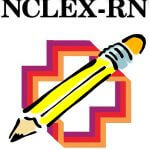7 TOEFL Tips For Achieving Your Best Score
 The Test of English as a Foreign Language (TOEFL) is a standardized test that allows non-English speakers to demonstrate their degree of readiness when it comes to enrolling at U.S. universities. Getting a degree in the U.S. can definitely improve one’s marketability, and the TOEFL can go a long way in getting non-English speakers to that goal. As such, this is one exam not to take lightly, and to help, we’ve compiled the following list of tips to help you get ahead. Let’s get started!
The Test of English as a Foreign Language (TOEFL) is a standardized test that allows non-English speakers to demonstrate their degree of readiness when it comes to enrolling at U.S. universities. Getting a degree in the U.S. can definitely improve one’s marketability, and the TOEFL can go a long way in getting non-English speakers to that goal. As such, this is one exam not to take lightly, and to help, we’ve compiled the following list of tips to help you get ahead. Let’s get started!
1. iBT vs. PBT: Learn Which One You’ll Be Taking.
The TOEFL is administered in two formats — the paper-based test (PBT) and the Internet-based test (iBT) — and while much of the material is the same, the formats are remarkably different as is the availability. Before going in on test day, you want to make sure that you’ve had enough time to recreate the test in practice conditions as much as possible, so the first thing that you need to do is inquire of the test administration site which kind they will be giving. As more countries catch up to Internet availability, look for more and more instances of the iBT, but in the meantime, don’t just assume that you will be taking it electronically.
2. Learn Your Target.
Before even launching into the materials that will be on the TOEFL test, you should look at the parameters, namely the scoring, so you can know what scores are possible and what you need to be considered proficient. Each of the four sections — Reading, Listening, Speaking, and Writing — are scored on a scale from 0 to 30. The individual tests add up to a total of 120 possible. Obviously the higher that you go, the better your score. Now what is unusual about the TOEFL is that you won’t be told whether you “passed” or “failed” the exam. To know if your score is good enough, you will need to turn to the requirements of the individual higher education authority where you are sending your application.
3. Stay Away from Slang English When Preparing.
If you have learned English from watching movies and television programs, you could be at a disadvantage. That’s because the TOEFL focuses on academic English — so-called “proper” English the way that you would learn it in an ESL course. Because English can be such a tricky and versatile language, you will run in to trouble if you follow what TV and movies say or the basic use of conversational English that you enjoy with your U.S.-based friends. We highly recommend working with a mentor, who is used to separating slang or colloquial English from academic or formal. That means a friend, who does poorly in English classes, isn’t your best bet, even if they’re able to fluently function within the rules of the English language.
4. Practice Tests … As Many As Possible.
At 4Tests, we always encourage test takers to experiment with their practice and studies as much as possible, and the TOEFL is no exception. Consider buying a few different study materials and consuming them in the weeks leading up to test day. That being said, we do offer, and encourage you to take, our own free version of the TOEFL at this link. The ideal scenario, of course, is for you to recreate the conditions of the test when you do a practice exam, and not simply the type of content. You want to walk in to the testing facility the day-of and feel like you’ve seen and done it all before even if this is your first time to take it.
5. Treat It Like A Marathon.
Most of you will probably be taking the iBT version of the TOEFL, and even though you won’t have ovals to darken, you’re not getting off easily in using a computer. The TOEFL iBT is four hours in length, with very little breathing room in between. That’s a long time to be focused on one particular thing, considering that science has proven the human attention span isn’t capable of maintaining its strength for longer than 20 or 30 minutes at a time. Getting to the point that you can sit through the TOEFL and do your best means building up to it. Consider keeping a journal in the weeks leading up to test day. Start with 25 minutes and compound the amount of study time that you put in by 10 percent each day. If you can keep that up for 24 days, you’ll be able to build up to four solid hours. The journal will help you stay accountable, and if you miss a day here and there, don’t worry. Just pick it up where you left off the next day. Make sure you’ve given yourself enough time to build up to test day, though.
6. Strengthen Keyboarding Skills.
The Writing portion of the exam especially requires that you have proficient typing skills. You certainly don’t want to do poorly because your fingers are incapable of moving fast enough to communicate your ideas, so consider adding a free online typing course like the one offered by GoodTyping at this link to help strengthen this skill.
7. Boost Your Note-Taking Ability.
You will not do well on the listening portion of the exam if you are unable to take notes quickly and effectively. For this, you may wish to utilize your native language and then later translate the materials into formal English when you have time to go back over what you’ve written and decode. This will help you with every aspect of the exam. Something else that works well when handwriting notes is leaving out the vowels as much as possible when you write words. For English, let’s say that you are taking notes on the Martin Luther King, Jr., “I Have a Dream” speech [via American Rhetoric]. Here’s an excerpt.
“Let us not wallow in the valley of despair, I say to you today, my friends.
“And so even though we face the difficulties of today and tomorrow, I still have a dream. It is a dream deeply rooted in the American dream.
“I have a dream that one day this nation will rise up and live out the true meaning of its creed: “We hold these truths to be self-evident, that all men are created equal.”
“I have a dream that one day on the red hills of Georgia, the sons of former slaves and the sons of former slave owners will be able to sit down together at the table of brotherhood.
“I have a dream that one day even the state of Mississippi, a state sweltering with the heat of injustice, sweltering with the heat of oppression, will be transformed into an oasis of freedom and justice.”
If you were listening to this and taking notes on it, your hand could move much faster to keep up if you dropped as many vowels as possible while still allowing the words to make sense. Example: “Lt us nt wllw n the vlly of dspr, I say 2 u today, my frnds.” This technique is known as “shorthand,” and it can serve you well when listening to any passage. Just make sure that as you go, you’re focusing on main ideas and not throwaway words.
In Summary
These TOEFL tips are just several that will get you started. If you have some you would like to include, please do so in the comments section below, and stay tuned as 4Tests revisits this test with more tips in the coming days. Good luck!
[TOEFL Image via CrackVerbal]








